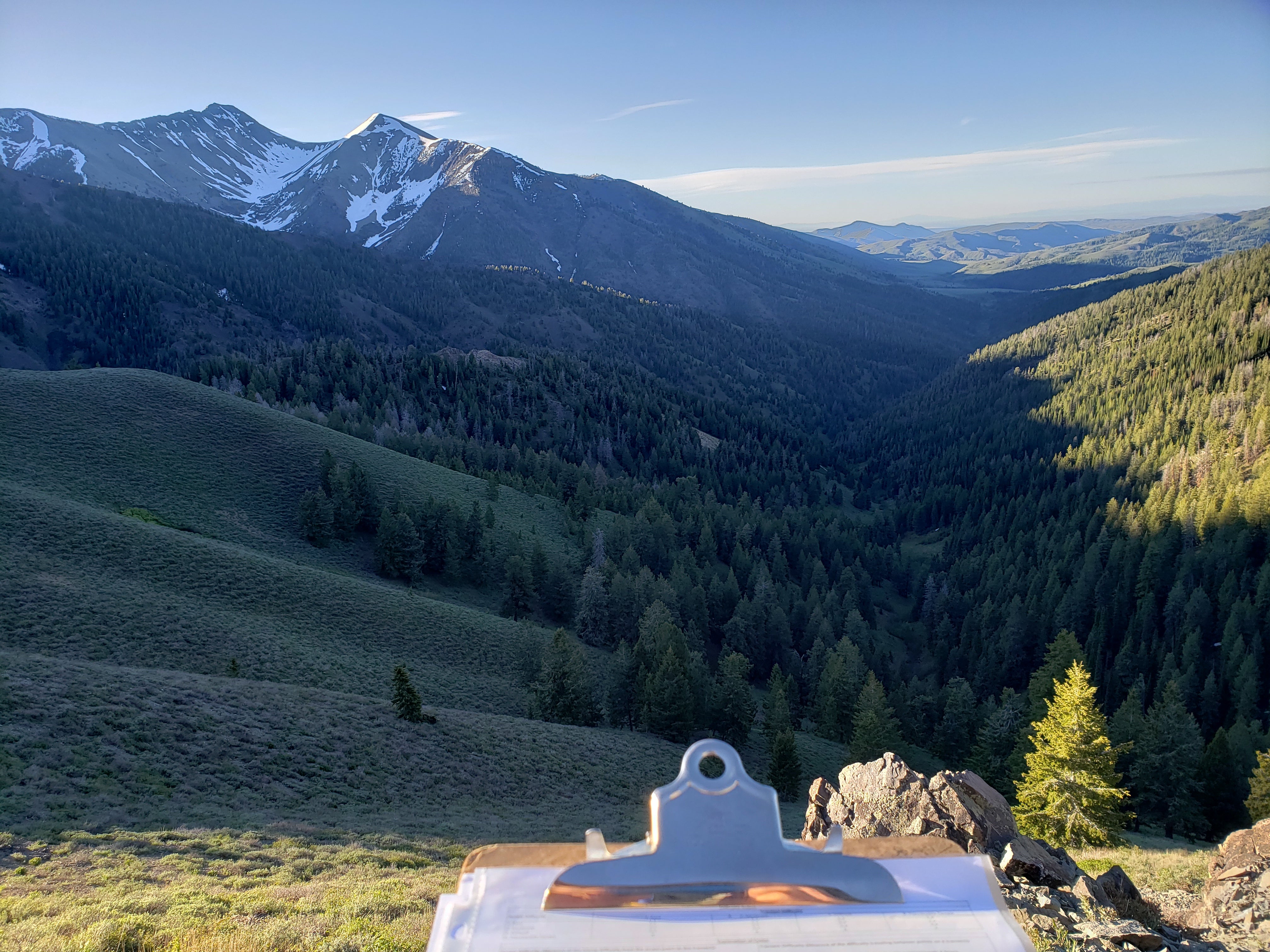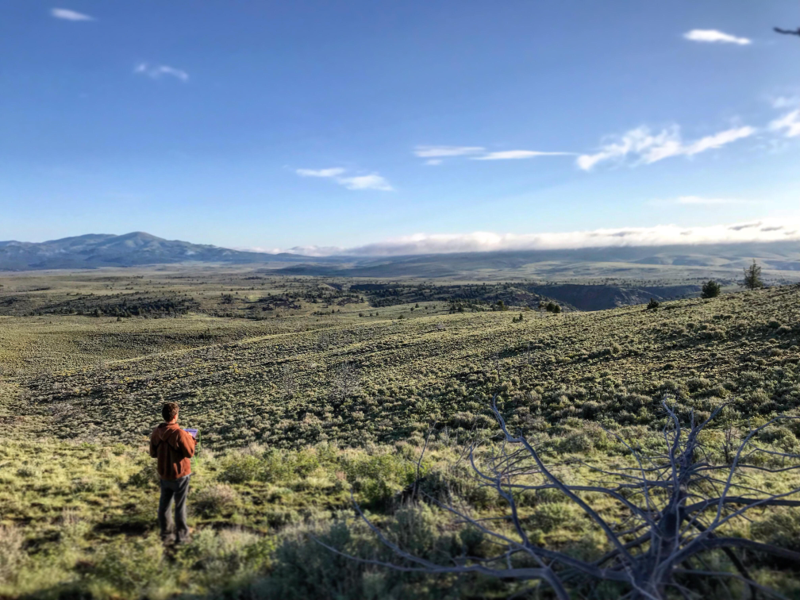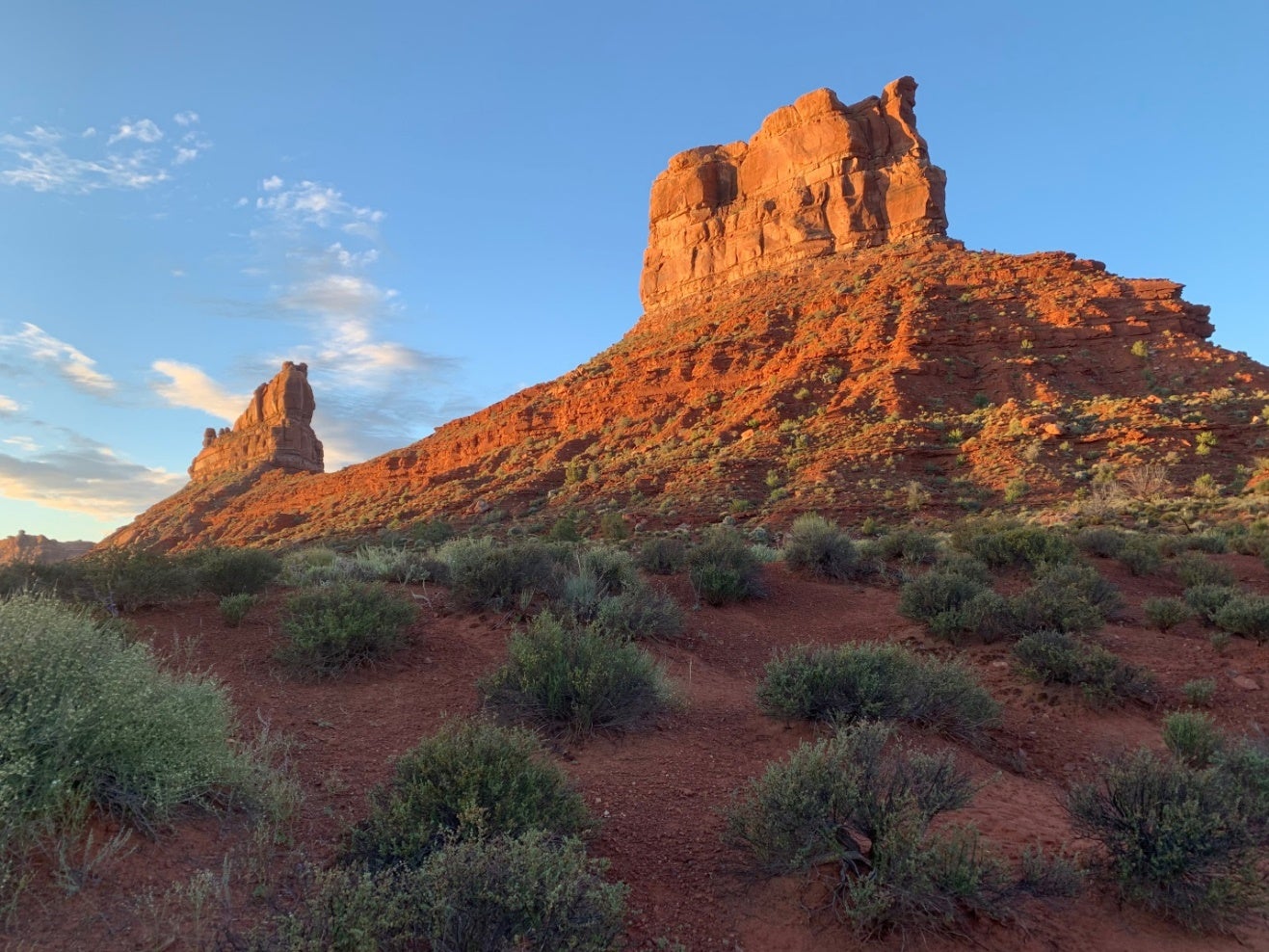By Jeremy Halka

This year marked the 9th season of surveys conducted by IBO for the Integrated Monitoring in Bird Conservation Regions (IMBCR) program. IMBCR is the second largest breeding bird program next to the Breeding Bird Survey, with surveys in 16 western and Great Plains states in 2019. IMBCR is a highly collaborative effort, with numerous funding and implementation partners across the scope of the program. The study design is statistically rigorous and fully integrated but also very flexible with sample selection and effort based on local needs, which may vary annually. The IMBCR program’s primary goals are to gain information on the distribution and abundance of breeding birds and to determine their long-term status and trends.
IMBCR data is used in a large variety of ways to ultimately help guide management efforts and provide measures of conservation success.
IMBCR surveys take place on both public and private lands, which not only helps generate reliable estimates across landscapes, but also provides an opportunity for outreach across the region by contacting landowners for permission to access their land.

At IBO, the IMBCR program brings in the largest grants and effort of all the projects we work on. It provides the bulk of funding for 3 full-time staff members (~1/3 of the organization) and keeps them very busy for most of the year. IBO also hires a large crew of seasonal technicians to conduct IMBCR surveys each year. In 2019, we employed 20 IMBCR technicians to survey across Idaho, Montana, and Utah! This large-scale effort has challenges that include (but certainly not limited to) training all of the technicians, renting what feels like a fleet of field vehicles, and above all making sure everyone is safe out in the wilderness. With the help of the Boise State Biology Department, the 2019 season was a huge success and we were able to complete all of our surveys (a feat in itself!) with minimal issues.

In 2019, IBO completed 524 IMBCR surveys throughout ID, MT, and UT. We tallied 78,175 individual bird detections representing 248 species on these surveys. We also contacted 180 landowners to gain access to survey points on private land. We primarily conducted surveys for national forests and BLM (Bureau of Land Management) field offices, but we also had the opportunity to collaborate on special projects utilizing the IMBCR design to focus on more specific questions. In southeast MT, we partnered with the World Wildlife Fund to conduct surveys on cattle ranches to compare grassland bird estimates between different grazing treatments with the ultimate goal of creating a bird-friendly beef product.
In southwest Idaho, we partnered with the local BLM district to conduct surveys on a large juniper treatment project designed to benefit the Greater Sage-Grouse.
These surveys will help determine the effects of juniper treatment on non-game birds in the region by conducting pre- and post-treatment surveys. All of the data we collect feeds back into the enormous IMBCR dataset to help generate density, occupancy, and trend estimates for many breeding species not only in our region but across the entire scope of the program.
For more information on the IMBCR program and to view reports from previous years, please visit the Bird Conservancy of the Rockies website (formerly Rocky Mountain Bird Observatory; creator of IMBCR).
This article is part of our 2019 end of the year newsletter! View the full newsletter here, or click “older posts” below to read the next article.